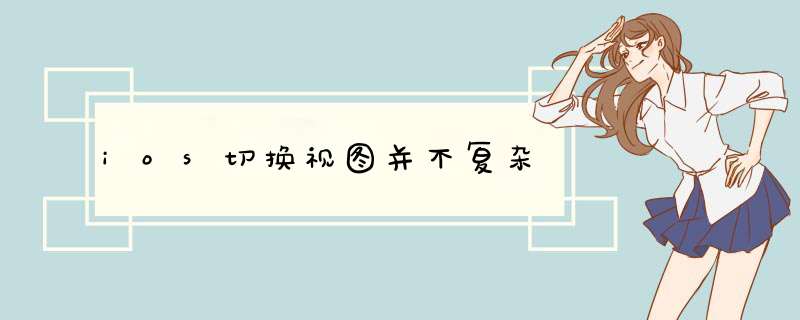
之前有两篇文章讲了使用Tool bar和Tab bar切换视图。其实,切换视图并不复杂,无非就是VIEw Controller的切换。
这篇文章介绍使用UINavigationController切换视图。这个Navigation Controller功能强大,主要用来切换多级的视图。可以将Navigation Controller理解成一个栈,这个栈中可以存放很多VIEw Controller。在这个栈创建的时候,我们先给它添加一个VIEw Controller,称为Root VIEw Controller,它放在栈底,代表的是刚加载程序的时候显示的视图。当用户新选择了一个想要显示的视图时,那个新的VIEw Controller入栈,它所控制的视图就会显示出来。这个新的VIEw Controller通常称作Sub Controller。
进入一个新的视图后,左上方会出现一个按钮,叫做Navigation button,它就像浏览器的后退按钮一样,点击此按钮,当前的VIEw Controller出栈,之前的VIEw就会显示。
这种设计模式使得开发变得简单,我们只需知道每一个VIEw Controller的Sub Controller就好了。
我们这次要做的小例子运行如下图:
左边的图片是刚运行时显示的效果,它是一个表格,表格中的每一行代表不通过的VIEw Controller。注意到每一行的右边有一个图标,叫做disclosure Indicator,它用来告诉用户单击这一行会进入另一个视图。当点击某行,就进入中间图片显示的视图。中间图片中,左上角的按钮就是Navigation button。中间的图片中,每一行右边有一个按钮,叫做Detail disclosure button,它不仅仅是一个图标,实际上它是一个控件,用户点击它会进入该行的详细说明。点击某行的Detail disclosure button,进入相应的视图,如右边的图片。
为了更好地理解Navigation Controller的原理,我们从Empty Application开始我们的小例子。
1、运行Xcode 4.2,新建一个Empty Application,名称为:Navigation Controller Test:
2、创建一个VIEw Controller,作为Root VIEw Controller:依次选择file——New——New file,在d出的窗口,左边选择iOS下的Cocoa touch,右边选择UIVIEwController subclass:
单击Next,在新窗口输入名称为RootVIEwController,sub of选择UItableVIEwController:
之后选好位置,完成创建。
3、打开AppDelegate.h,向其中添加属性:
@property (strong,nonatomic) UINavigationController *navController;
然后打开AppDelegate.m,在@implementation之前添加代码:
#import "RootVIEwController.h"
在@synthesize window = _window;之后添加代码:
@synthesize navController;#pragma mark - #pragma mark Application lifecycle
在dIDFinishLaunchingWithOptions方法中添加代码:
- (BOol)application:(UIApplication *)application dIDFinishLaunchingWithOptions:(NSDictionary *)launchOptions{ self.window = [[UIWindow alloc] initWithFrame:[[UIScreen mainScreen] bounds]]; // OverrIDe point for customization after application launch. RootVIEwController *root = [[RootVIEwController alloc] initWithStyle:UItableVIEwStylePlain]; self.navController = [[UINavigationController alloc] initWithRootVIEwController:root]; [self.window addSubvIEw:navController.vIEw]; self.window.backgroundcolor = [UIcolor whitecolor]; [self.window makeKeyAndVisible]; return YES;} 4、我们先要明确,Root VIEw Controller中是一个表格,它的每一行对应一个Sub VIEw Controller。
打开RootVIEwController.h,添加属性:
打开RootVIEwController.m,在@implementation之后添加代码:@synthesize controllerList;在vIEwDIDLoad中[super vIEwDIDLoad];之后添加代码:
self.Title = @"分类"; NSMutableArray *array = [[NSMutableArray alloc] init]; self.controllerList = array;在VIEwDIDUnload方法中添加代码:
self.controllerList = nil;找到numberOfSectionsIntableVIEw方法,修改其返回值为1。
找到numberOfRowsInSection:方法,修改代码为:
return [controllerList count];找到cellForRowAtIndexPath方法,修改其中代码如下:
- (UItableVIEwCell *)tableVIEw:(UItableVIEw *)tableVIEw cellForRowAtIndexPath:(NSIndexPath *)indexPath{ static Nsstring *RoottableVIEwCell = @"RoottableVIEwCell"; UItableVIEwCell *cell = [tableVIEw dequeueReusableCellWithIDentifIEr: RoottableVIEwCell]; if (cell == nil) { cell = [[UItableVIEwCell alloc] initWithStyle:UItableVIEwCellStyleDefault reuseIDentifIEr: RoottableVIEwCell]; } NSUInteger row = [indexPath row]; UItableVIEwController *controller = [controllerList objectAtIndex:row]; //这里设置每一行显示的文本为所对应的VIEw Controller的标题 cell.textLabel.text = controller.Title; //accessoryType就表示每行右边的图标 cell.accessoryType = UItableVIEwCellAccessorydisclosureIndicator; return cell; }找到dIDSelectRowAtIndexPath:方法,修改其中代码如下:
- (voID)tableVIEw:(UItableVIEw *)tableVIEw dIDSelectRowAtIndexPath:(NSIndexPath *)indexPath{ NSUInteger row = [indexPath row]; UItableVIEwController *nextController = [self.controllerList objectAtIndex:row]; [self.navigationController pushVIEwController:nextController animated:YES]; }5、现在为止,我们还看不到什么效果,那是因为controllerList这个数组现在是空的。
接下来我们创建一个table VIEw Controller,用于显示电影列表。建立的方法同建立RootVIEwController一样,名称为:MovIEVIEwController。
之后再创建一个VIEw Controller,名称为MovIEDetailVIEwController,用于显示电影的详细信息,这次我们要选中include xib file…选项,并且Subof选项为UIVIEwController:
6、打开MovIEDetailVIEwController.xib,拖一个Label到中间,并拉长。将其映射到MovIEDetailVIEwController.h中,名称为detailLabel:
然后在MovIEDetailVIEwController.h中添加属性:
@property (copy,nonatomic) Nsstring *message;打开MovIEDetailVIEwController.m,在@implementation之后添加代码:
@synthesize message;在vIEwDIDLoad方法后面添加一个方法:
- (voID)vIEwWillAppear:(BOol)animated { detailLabel.text = message; [super vIEwWillAppear:animated]; }vIEwWillAppear这个方法每次视图加载都会执行,而vIEwDIDLoad方法只有在第一次加载时才会执行。
在vIEwDIDUnload方法中添加代码:
self.detailLabel = nil;self.message = nil;7、打开MovIEVIEwController.h,向其中添加属性:
打开MovIEVIEwController.m,在@implementation之前添加代码:#import "MovIEDetailVIEwController.h"#import "AppDelegate.h"@interface MovIEVIEwController () @property (strong,nonatomic) MovIEDetailVIEwController *childController; @end在@implementation之后添加代码:
@synthesize movIEList;@synthesize childController;在vIEwDIDLoad方法中添加代码:
NSArray *array = [[NSArray alloc] initWithObjects:@"肖申克的救赎",@"教父",@"教父:II",@"低俗小说",@"黄金三镖客",@"十二怒汉",@"辛德勒名单",@"蝙蝠侠前传2:黑暗骑士",@"指环王:王者归来",@"飞越疯人院",@"星球大战Ⅴ:帝国反击战",@"搏击俱乐部",@"盗梦空间",@"七武士",@"指环王:护戒使者",@"好家伙",@"星球大战IV:新希望",@"上帝之城",@"卡萨布兰卡",@"黑客帝国",@"西部往事",@"后窗",@"夺宝奇兵",@"沉默的羔羊",@"非常嫌疑犯",@"七宗罪",@"指环王:双塔奇兵",@"阿甘正传",@"惊魂记",@"美好人生",nil];self.movIEList = array;self.movIEList = nil;self.childController = nil;
return [movIEList count];
- (UItableVIEwCell *)tableVIEw:(UItableVIEw *)tableVIEw cellForRowAtIndexPath:(NSIndexPath *)indexPath{ static Nsstring *MovIEtableVIEwCell = @"MovIEtableVIEwCell"; UItableVIEwCell *cell = [tableVIEw dequeueReusableCellWithIDentifIEr: MovIEtableVIEwCell]; if (cell == nil) { cell = [[UItableVIEwCell alloc] initWithStyle:UItableVIEwCellStyleDefault reuseIDentifIEr: MovIEtableVIEwCell]; } NSUInteger row = [indexPath row]; Nsstring *movIETitle = [movIEList objectAtIndex:row]; //这里设置每一行显示的文本为所对应的VIEw Controller的标题 cell.textLabel.text = movIETitle; //accessoryType就表示每行右边的图标 cell.accessoryType = UItableVIEwCellAccessoryDetaildisclosurebutton; return cell;}
修改dIDSelectRowAtIndexPath方法:
- (voID)tableVIEw:(UItableVIEw *)tableVIEw dIDSelectRowAtIndexPath:(NSIndexPath *)indexPath{ [tableVIEw deselectRowAtIndexPath:indexPath animated:YES]; } 在@end之前添加方法:
- (voID)tableVIEw:(UItableVIEw *)tableVIEw accessorybuttonTappedForRowWithIndexPath:(NSIndexPath *)indexPath { if (childController == nil) { childController = [[MovIEDetailVIEwController alloc] initWithNibname:@"MovIEDetailVIEwController" bundle:nil]; } NSUInteger row = [indexPath row]; Nsstring *selectedMovIE = [movIEList objectAtIndex:row]; Nsstring *detailMessage = [[Nsstring alloc] initWithFormat:@"你选择了电影:%@.",selectedMovIE]; childController.message = detailMessage; childController.Title = selectedMovIE; [self.navigationController pushVIEwController:childController animated:YES]; } 8、打开RootVIEwController.m,在@implementation之前添加代码:
#import "MovIEVIEwController.h"
在vIEwDIDLoad方法中self.controllerList = array;之前添加代码:
//电影 MovIEVIEwController *movIEVIEwController = [[MovIEVIEwController alloc] initWithStyle:UItableVIEwStylePlain]; movIEVIEwController.Title = @"电影"; [array addobject:movIEVIEwController];
9、运行一下:
RootVIEwController表格中其他选项的实现跟上面是类似的,重复 *** 作比较多,不再讲了。
总的来说,Navigation Controller还是很强大的。使用的时候把它想象成一个栈,用起来就会比较简单。
最终代码:http://www.oschina.net/code/snippet_164134_12787
总结以上是内存溢出为你收集整理的ios切换视图并不复杂全部内容,希望文章能够帮你解决ios切换视图并不复杂所遇到的程序开发问题。
如果觉得内存溢出网站内容还不错,欢迎将内存溢出网站推荐给程序员好友。
欢迎分享,转载请注明来源:内存溢出

 微信扫一扫
微信扫一扫
 支付宝扫一扫
支付宝扫一扫
评论列表(0条)